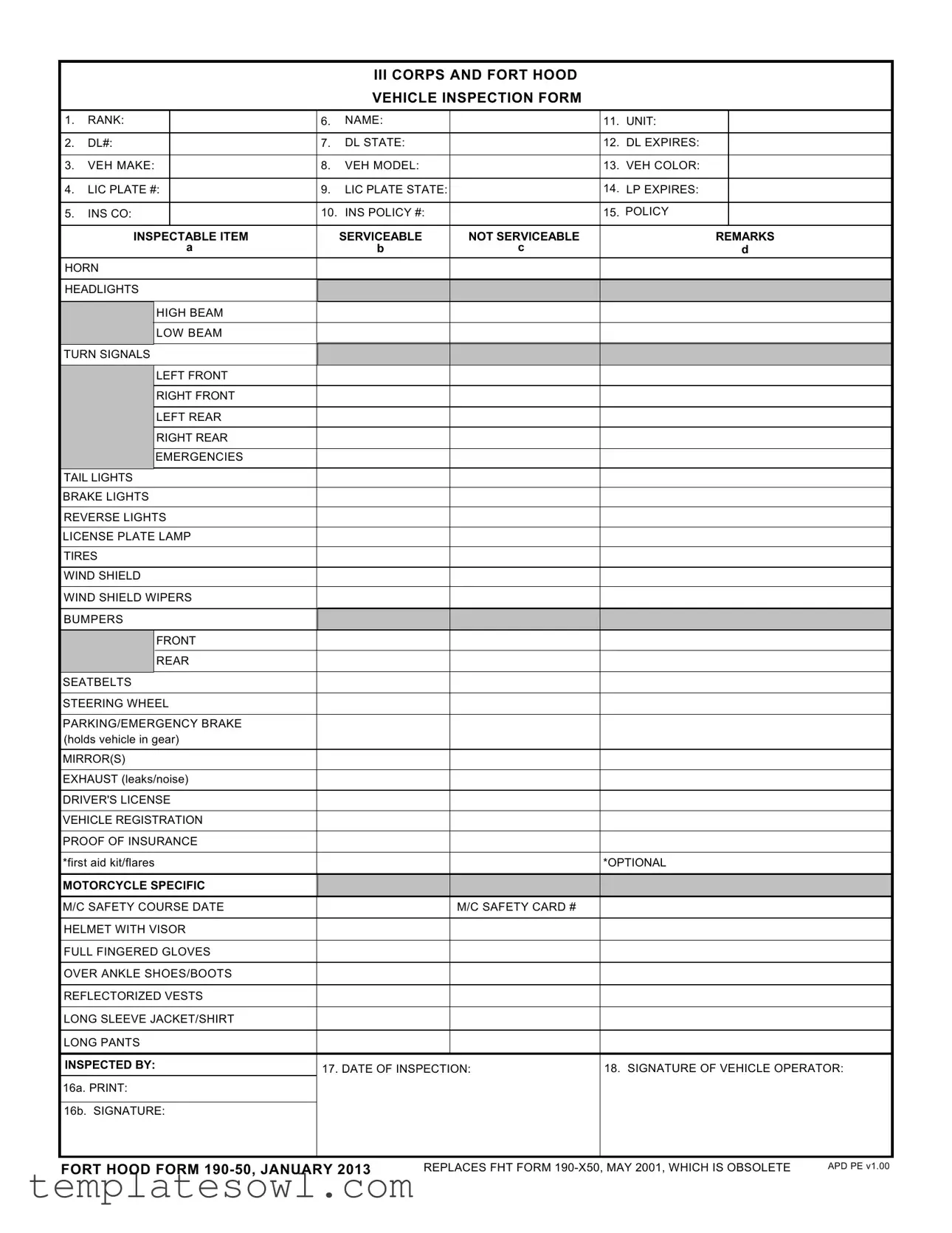What is the Fort Hood 190 50 form used for?
The Fort Hood 190 50 form is a vehicle inspection form specifically used at Fort Hood. It documents the inspection of various safety and compliance features of a vehicle before it is allowed on base. This includes checking items such as headlights, turn signals, tires, and proof of insurance. The form ensures that vehicles meet safety standards required by the installation.
Who needs to complete the Fort Hood 190 50 form?
All personnel operating a vehicle on Fort Hood may need to complete this form. This includes military members, dependents, and civilians who require base access. The vehicle inspection must be conducted whenever a vehicle is brought onto the installation to assure compliance with safety regulations.
What information is required on the Fort Hood 190 50 form?
The form requires several pieces of information, including the rank, name, driver's license number and state, vehicle make and model, license plate details, and insurance information. Additionally, the form requires inspection results for various inspectable items, indicating whether they are serviceable or not.
What items are inspected using the Fort Hood 190 50 form?
A variety of items are examined as part of the vehicle inspection. This includes safety features like headlights, horn, brake lights, and seatbelts. It also involves checking the driver's license, vehicle registration, and insurance documents. For motorcycles, specific safety equipment such as helmets and reflective vests are also inspected.
How is the inspection conducted?
The inspection is typically conducted by a qualified inspector, who will check each item listed on the form. The inspector will mark each item as either serviceable or not serviceable. Any issues found will be noted in the remarks section. The vehicle operator must also provide signatures to acknowledge the inspection results.
Where can I find the Fort Hood 190 50 form?
The form can usually be obtained at Fort Hood's access control points, vehicle registration offices, or specific military units. Additionally, some online resources may provide access to the form for convenience, though using the most current version is essential to ensure compliance with regulations.

